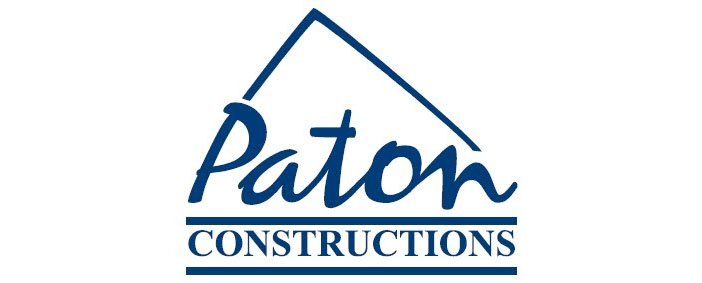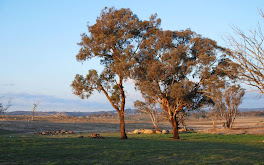Wednesday, March 31, 2010
New! Learn the basic principles of designing an energy efficient home
These articles will appear as tabs (above) - click on Why use a concrete slab? to read all about the benefits of using a concrete slab in the construction of a home utilising solar passive design.
Saturday, January 30, 2010
Murrumbateman house

The slab has been laid. The angle of the slab is crucial for the solar passive design to work - due North to within 11deg either way. The slab is concrete; this will also be the finished flooring of the house. The slab is finished with a helicopter polisher. The slab is then protected as the frame is erected onto it.

Here is a view of the start of the frame work. It is a combination of a wood frame and double brick. The double brick helps with the thermal mass. The winter sun is low enough to come into the house and be captured by the brick and the slab. It is then released later in the day/evening when the outside temperature drops. This is not a problem in the summer due to the angle of the roof.

The main room of the house has a raked ceiling. Once again it is at a certain angle to allow the winter sun in, drenching the rooms with glorious sunlight. Large double doors and high windows will enable this to happen. This room will open out onto the timber deck. From here all you can see is beautiful north-facing views. This room has been designed to be the hub of family living here.
If you have questions about this house or anything at all please email us at leslie@patonconstructions.com.au
Thursday, August 13, 2009
New home on its way

Today we started building a new home for clients. We hope to be able to take you on the journey with us. We will do regular updates for you and will also post pictures of the site and home.
The site is ideal in that it is close to 2 acres in size and has beautiful north-facing rural views. The clients have been very clever in selecting a block that is ideal for building a solar passive home. Now this is not always possible but there are ways to work with what is available to you. Almost any block can be worked to use the sun's potential to heat your home. As discussed in earlier posts, the layout of the home and the materials used are big elements in capturing the sun's potential. We were able to sit down with our clients and discuss what they wanted in a home and then develop that into an ideal house plan that not only became a very efficient solar passive design, but also the perfect layout to suit the family.
As you can see from the picture above, there are amazing views from the north of the property - farmland as far as the eye can see. This land is only 25 minutes drive from the centre of Canberra.
We hope you will follow us in this venture and be inspired to design an inspiring energy efficient home of your own.
Monday, July 20, 2009
Solar design Basics

Solar passive design does not have to be complicated. here are some basic to consider.
1. Choose a site that receives North sun during winter.
2. Choose a home design with few projections below the roof line and no porches on the North.
3. Orient the longest wall of the house so it faces true north.
4. Maximize windows on the north side.
5. Design the roof overhangs to shade windows properly from the high summer sun.
6. Provide thermal mass (tile floors and brick or masonry walls) in the north side of the house.
7. Insulate and seal the structure well.
8. Correctly size the heating and cooling system.
At Paton Constructions we take these basic design elements and combine them with what you need in a home. From this we can design something that is perfect for you!
Information on loan from Mother earth News with thanks. Picture from origin Energy
Saturday, June 6, 2009
Solar Power Rebates

Eligibility
- Rebates and grants are available for the purchase and installation of major equipment items. Equipment must be new and not second-hand.
- Residential rebates are for photovoltaic systems that are connected to a main-grid or are very close to a main-grid.
- Any system eligible for a rebate under the Renewable Remote Power Generation Program is ineligible for the Solar Homes and Communities Plan; applicants should discuss which rebate to apply for with an accredited designer and installer.
- The person who carries out the installation must be accredited for design and installation of photovoltaic systems.
- Applicant's household taxable income must be less than $100,000.
- Applications close June 30 2009.
How to apply
All applicants should send completed forms by mail to:
Solar Homes and Communities Plan Manager Department of the Environment, Water, Heritage and the Arts PO Box 787 CANBERRA ACT 2600 For more information on how to apply, contact the national information line on 1800 808 571.
Saturday, May 30, 2009
Passive Design

Passive design is design that does not require mechanical heating or cooling. Homes that are passively designed take advantage of natural climate to maintain thermal comfort.
Incorporating the principles of passive design in your home:
- Significantly improves comfort
- Reduces or eliminates heating and cooling bills
- Reduces greenhouse gas emissions from heating, cooling, mechanical ventilation and lighting.
Building envelope is a term used to describe the roof, walls, windows, floors and internal walls of a home. The envelope controls heat gain in summer and heat loss in winter.
Its performance in modifying or filtering climatic extremes is greatly improved by passive design.
Well designed envelopes maximise cooling air movement and exclude sun in summer. In winter, they trap and store heat from the sun and minimise heat loss to the external environment.
The fundamental principles of passive design, explained above are relatively simple and can be applied to the various climate zones, house types and construction systems in Australia. To explain all of these combinations in sufficient detail, information has been divided into separate fact sheets as follows:
This information is from Your Home A joint initiative of the Australian Government and the design and construction industries






